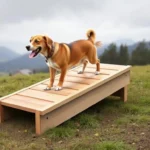
Introduction
Dog sitting is a vital service that allows pet owners to ensure their furry friends receive the care, attention, and companionship they need while the owners are away. Whether it’s for a day, a weekend, or an extended vacation, responsible dog sitting is about providing a safe and loving environment for dogs.
This article aims to equip both novice and experienced dog sitters with essential dog sitting tips to enhance their skills and confidence. By the end of this guide, you will be well-prepared to take on the rewarding role of a dog sitter, ensuring a smooth and enjoyable experience for both you and the dogs in your care.
Target Audience
This guide is designed for dog owners seeking reliable sitters and individuals interested in offering dog sitting services. Whether you’re a pet parent looking for the right person to care for your dog or someone looking to make some extra money by dog sitting, the following tips will prove invaluable.
Preparing for Dog Sitting
Understanding the Dog’s Needs
Every dog is unique, and understanding their specific requirements is crucial for effective dog sitting. Here are some factors to consider:
- Breed-specific requirements: Different breeds have varying needs in terms of exercise, grooming, and social interaction. For example, high-energy breeds like Border Collies require more exercise than a low-energy breed like a Bulldog.
- Age considerations: Puppies and senior dogs have distinct needs. Puppies may require frequent potty breaks and socialization, while senior dogs may need special accommodations for health issues.
- Health and dietary needs: Be aware of any allergies, medications, or special dietary requirements the dog may have. Always follow the owner’s instructions regarding food and medications.
Meeting the Owner
A meet-and-greet is an essential step in the dog sitting process. It allows you to build rapport with the owner and ensures they feel comfortable leaving their dog in your care.
- Importance of a meet-and-greet: This initial meeting helps establish trust and allows you to observe the dog’s behavior in a familiar environment.
- Questions to ask the dog owner: Inquire about the dog’s daily routine, preferences, and any quirks. Ask about their favorite activities and any specific commands they respond to.
- Discussing the dog’s routine and behavior: Understanding the dog’s daily rhythm will help you maintain consistency, which is vital for their comfort and security.
Essential Supplies and Equipment
Before you start dog sitting, gather all necessary supplies to ensure you are well-prepared.
- List of necessary items:
- Food and water bowls
- Dog food
- Treats
- Toys
- Leashes and collars
- Recommended equipment for safety: Ensure you have sturdy leashes and collars that fit properly. Consider using a harness for added security during walks.
- First-aid kit essentials: A basic first-aid kit for dogs should include bandages, antiseptic wipes, tweezers, and any medications the dog may need.
Creating a Comfortable Environment
Setting Up the Space
Creating a safe and welcoming environment for the dog is crucial for their comfort.
- Designating a safe area for the dog: Choose a quiet space where the dog can feel secure. This could be a specific room or a cozy corner with their bed and toys.
- Dog-proofing the environment: Remove any hazardous items, such as toxic plants, small objects that could be swallowed, and keep electrical cords out of reach.
Establishing a Routine
Dogs thrive on routine, which helps them feel secure and reduces anxiety.
- Importance of consistency in feeding and walking times: Stick to the schedule provided by the owner as closely as possible. Consistent feeding and walking times help maintain the dog’s comfort.
- Incorporating playtime and training sessions: Include regular play sessions and short training exercises to keep the dog engaged and stimulated.
Socializing the Dog
Socialization is essential for a well-adjusted dog. Here are some tips for introducing the dog to new environments:
- Tips for introducing the dog to new environments: Gradually expose the dog to new sights and sounds, ensuring they are comfortable before moving on to more stimulating environments.
- Managing interactions with other pets or children: If there are other pets or children in the home, supervise their interactions closely to ensure everyone remains safe and comfortable.
Daily Care Best Practices
Feeding Guidelines
Proper nutrition is crucial for a dog’s wellbeing.
- How to follow the owner’s feeding schedule: Adhere to the schedule provided by the owner, and measure portions accurately to avoid overfeeding or underfeeding.
- Understanding portion control and dietary restrictions: Be aware of any dietary restrictions and adjust portions based on the dog’s size, age, and activity level.
Exercise and Playtime
Regular exercise is vital for a dog’s physical and mental health.
- Recommended exercise routines based on dog breed and age: High-energy dogs will require longer walks and play sessions, while older dogs may prefer shorter, gentler exercises.
- Engaging play activities to keep the dog entertained: Incorporate activities like fetch, tug-of-war, or puzzle toys to keep the dog mentally stimulated.
Grooming and Hygiene
Maintaining the dog’s hygiene is an important aspect of dog sitting.
- Basic grooming tips: Regular brushing helps reduce shedding and matting. Depending on the breed, baths may be necessary, and nail trimming should be done as needed.
- Importance of maintaining hygiene: Clean up after the dog during walks and in the home to keep the environment pleasant for everyone.
Managing Behavioral Issues
Understanding Canine Behavior
Recognizing and understanding canine behavior is key to effective dog sitting.
- Common behavioral signs: Look for signs of anxiety, aggression, or stress. Dogs may exhibit behaviors like excessive barking, hiding, or destructive chewing when they are uncomfortable.
- How to identify stress triggers in dogs: Pay attention to the dog’s body language and reactions to various stimuli. Identifying triggers early can help prevent potential issues.
Strategies for Managing Behavior
Implementing effective strategies can help manage behavioral issues.
- Positive reinforcement techniques: Use treats and praise to reinforce good behavior. This approach fosters trust and encourages the dog to repeat positive actions.
- Time-out methods for discipline and calmness: If the dog exhibits undesirable behavior, a brief time-out in a safe space can help them calm down.
When to Seek Help
Sometimes, professional help may be necessary.
- Knowing when to contact the owner or a professional trainer: If behavioral issues escalate, contact the owner for guidance or recommend a professional trainer if necessary.
- Resources for behavioral training: Familiarize yourself with local trainers or online resources that can assist in addressing specific behavioral problems.
Safety Considerations
Emergency Preparedness
Being prepared for emergencies is vital for any dog sitter.
- Creating a contact list: Have a list of important contacts, including the owner, veterinarian, and emergency pet clinic, readily available.
- Essential information to have on hand: Keep the dog’s medical history, vaccination records, and any special instructions from the owner in a safe place.
Recognizing Health Issues
Being able to identify health issues early can save a dog’s life.
- Signs of common health problems: Watch for symptoms like vomiting, diarrhea, lethargy, or unusual behavior, which could indicate illness.
- What to do in case of an emergency: If a health issue arises, contact the owner immediately and follow their instructions. If it’s a serious emergency, take the dog to the nearest veterinary clinic.
Safe Outdoor Practices
Outdoor safety is a crucial aspect of dog sitting.
- Tips for safe walks: Always use a secure leash and harness. Be mindful of your surroundings, avoiding busy roads or areas with potential hazards.
- Importance of supervision in outdoor areas: Never leave the dog unattended in unsecured areas. Always supervise them in parks or backyards.
Post-Dog Sitting Follow-Up
Communicating with the Owner
After your dog sitting duties are complete, effective communication is essential.
- Providing updates on the dog’s wellbeing: Send the owner updates about the dog’s behavior, eating habits, and any activities you enjoyed together.
- Sharing experiences and any issues that arose: Honest communication helps build trust and ensures the owner is aware of any concerns.
Reflecting on Your Experience
Self-reflection is an essential part of improving your skills as a dog sitter.
- Evaluating your performance as a dog sitter: Consider what went well and what could be improved. This reflection will help enhance your skills for future dog sitting opportunities.
- Areas for improvement for future sitting jobs: Identify specific areas where you can enhance your knowledge or skills, such as training techniques or dog behavior understanding.
Building a Relationship
Maintaining a relationship with the dog owner can lead to repeat business.
- Tips for maintaining contact with the dog owner: After the dog sitting job, follow up with a thank-you message and maintain occasional contact to check in on the dog.
- Encouraging repeat business and referrals: If the owner is pleased with your service, encourage them to hire you again and consider asking for referrals to friends or family.
Conclusion
In summary, effective dog sitting requires preparation, understanding, and communication. By following the tips outlined in this article, you can ensure a positive experience for both the dogs in your care and their owners.
Final Thoughts
Taking on the responsibility of dog sitting can be incredibly rewarding. The joy of caring for a dog and providing them with a safe and loving environment is unmatched. Whether you’re a seasoned sitter or just starting, remember that each experience will help you grow and enhance your skills.
Feel free to share your own dog sitting tips or experiences in the comments below! Your insights could help others in the community.









